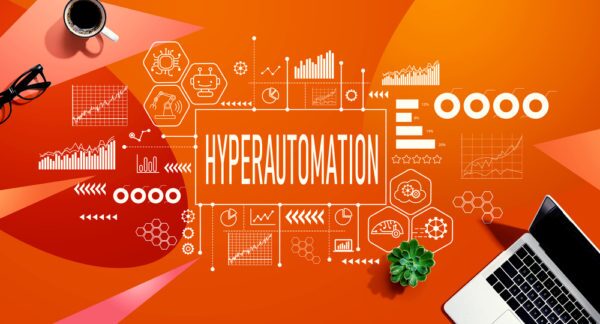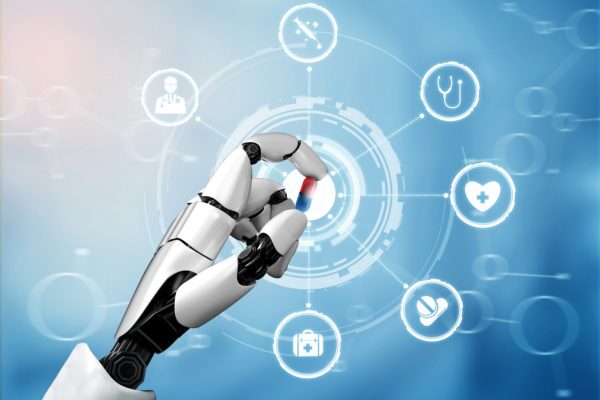To be competitive, organizations need to realize the full potential of end-to-end automation and advanced technologies to improve patient outcomes and handle important medical data. The term for unifying different technologies, platforms, and other complementary technologies to deploy processes like artificial intelligence, machine learning, and Robotic Process Automation (RPA) is hyperautomation.
- This blog post will analyze hyperautomation in the context of the healthcare industry and discuss:
- What automation is for the healthcare sector
- Its benefits for healthcare providers and patients alike
- Specific use cases in the healthcare industry

- Automate business operations and improve business process management
- Increase agility and optimize workflows
- Produce products more quickly by using intelligent insights, improving consistency, and reducing human error
- Faster and accurate health outcomes reporting due to intelligent automation
- Reduce operational costs by replacing manual tasks with automation
[FREE RESOURCE] 10 Technology Trends You Need to Know
Hyperautomation will transform the healthcare industry, and automation technology has already begun in areas like:
-
Having an all-in-one place for electronic health records
- Improved patient outcomes
- Scheduling and rescheduling appointments
- Identifying gaps in data and auto-populating patient forms through data mining
- Working with health insurance companies to collect missing information for claims processing.
- Using Voice Biometric technology to identify patients.
- Leveraging chatbots to answer patient FAQs about healthcare services
- Processing standardization to improve healthcare quality and patient experience
- Processing other administrative tasks for operational efficiency
Healthcare hyperautomation also makes a significant impact on analytics and actionable data usage. Healthcare organizations can use process mining and data analytics to improve patient data registration and the insurance verification process. It also helps the pharmaceutical industry automate requirements for drug reconciliations for controlled substances. In a recent study, HIMSS found that 35 pharmacies were able to save ten hours a month using healthcare hyperautomation. That’s ten more hours for patient care or other more important tasks.
Patients and organizations alike will also increasingly rely on remote monitoring and connected devices. Remote monitoring is essential for patient safety right now, given the need for social distancing and lesser human intervention. Organizations will be deploying medical devices and wearables, automating digital patient engagement, and leveraging data analytics more than ever. Patients can use devices to monitor blood pressure and glucose levels. With support from analytics, digital health assistants will eventually be able to give patients treatment recommendations and plans for better patient care.

Specific Use Cases for Hyperautomation in Healthcare
One way hospitals and clinics can use this newer healthcare innovation for intelligent document processing, instead of dictating notes during and after a patient’s visit. Artificial Intelligence (AI) can assist in patient-physician conversations during the visit, and those tools can prompt the physician to add clarity and context to notes. End-to-end automation tools can also process patient data management, documentation, and prioritize work for specialists.
“These AI tools are identifying cases and factors that they need to explore and investigate and that can revolutionize healthcare administration,” says Jared Sorensen, VP at 3M Healthcare Information Solutions to HIMSS. “Whether there’s a documentation gap or a quality issue that needs to be addressed, it can be done in real-time through prioritization findings rather than looked at retrospectively after the patient has left.”
AI can also significantly improve the backend business processes for administrative functions like coding and billing or automating internal audit processes. It can create automated coding for electronic health records in areas like radiology, ultrasound, and mammography. This helps contribute to creating a direct-to-bill revenue cycle within healthcare organizations.
It takes a considerable amount of time and resources to generate a patient’s bill and send it to them. Process automation can reduce costs and productivity, streamline regulatory compliance, and provide greater accuracy.
How to Get Started With Hyperautomation in Healthcare
- Get stakeholder support and consult experts in the healthcare landscape. Retrieve perspectives from the business sector and the technology sector.
- Identify constraints, risks, or challenging business processes that you may need to mitigate.
- As IBM notes, “Whenever a process is automated, particularly with hyperautomation, you should expect to encounter employee fears of replacement and concerns about the value and competency of technology.” Carve out time to assuage their fears, educate them, and answer questions about this digital transformation.
- Focus on areas where the highest value exists. Figure out what processes you need to help now with automation, and which ones can wait.

Get Support for Your Hyperautomation Goals
Hyperautomation can save healthcare companies time and money, and help them provide more accurate information both internally and externally. However, introducing any digital transformation in healthcare operations requires a methodical strategy.
The DMI team has ample experience in operationalizing AI and machine learning to meet customer goals. As a new breed of end-to-endless partner, we’ll work with you to deliver a comprehensive hyperautomation strategy for healthcare and multiple other industries. Contact DMI to start the process.
[hubspot type=cta portal=8444324 id=79fda376-965e-472a-ac01-a2481bfe4cde]


